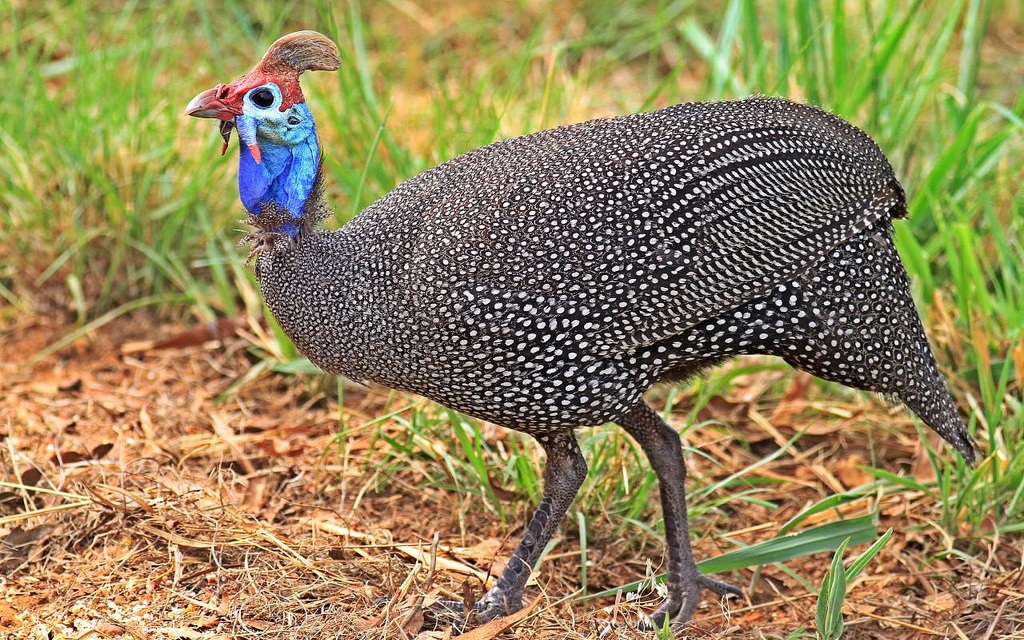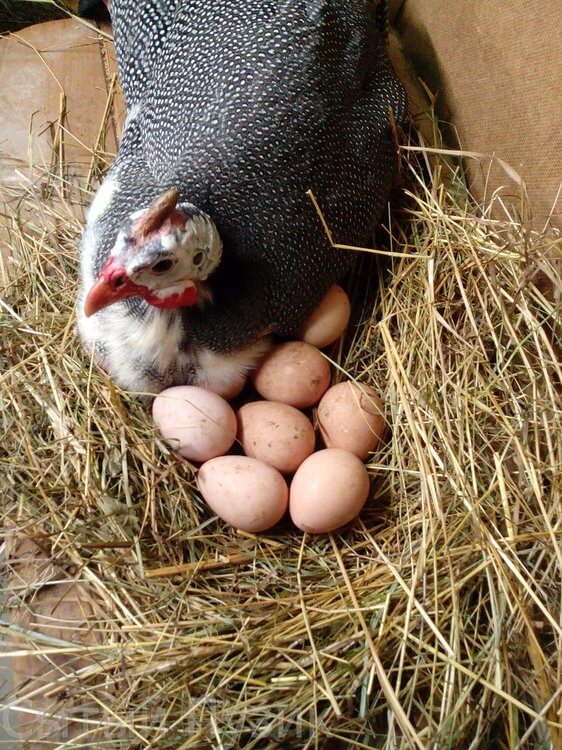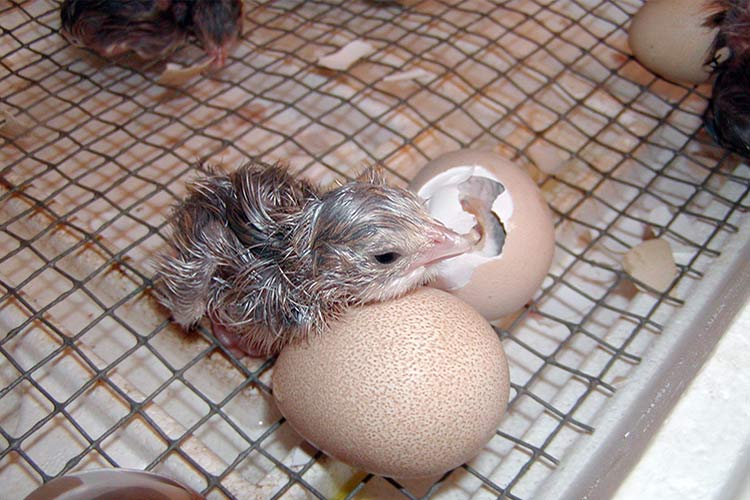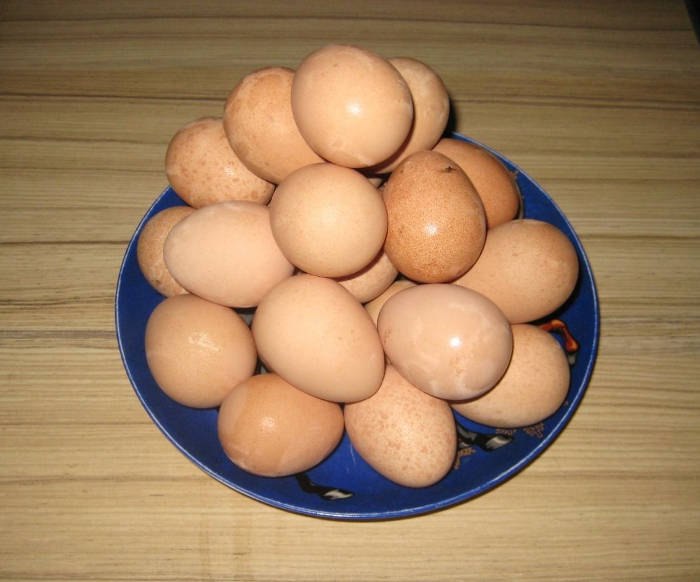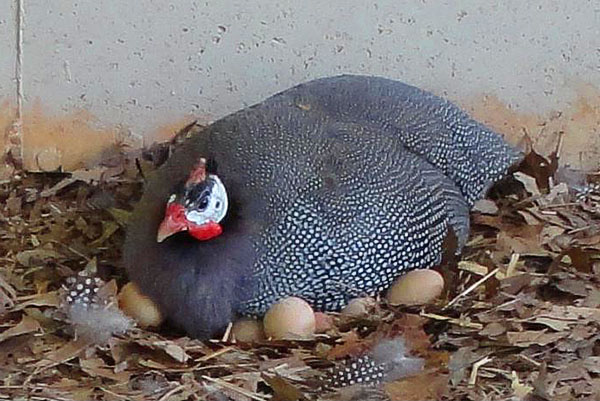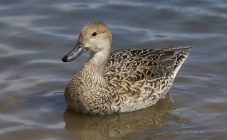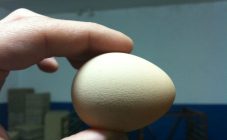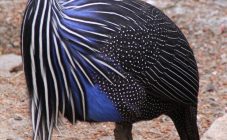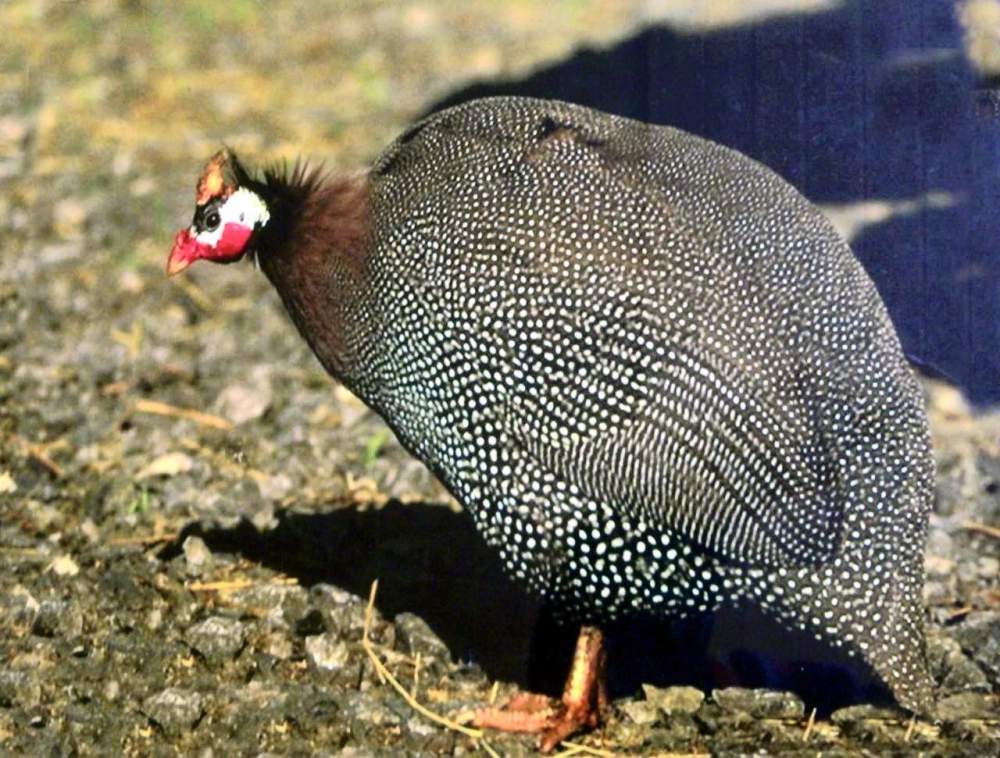Content:
The homeland of the guinea fowl (royal chicken) is the western, central and southern regions of Africa. For the first time this breed of birds appeared in Ancient Rome and Ancient Greece in the days of antiquity, it came to Europe much later, only in the 15-16 centuries. From that moment on, the guinea fowl could be found in poultry farms everywhere. Only the purpose of these birds was ambiguous. If in the USA guinea fowls saved Americans from the invasion of ixodid ticks - carriers of various diseases dangerous to humans, then the central strip of Russia was engaged in breeding guinea fowls exclusively for decorative purposes.
Breeding benefits
Today these birds are of great economic importance.
This was facilitated by the following useful qualities of guinea fowls:
- Can be bred in any conditions (closed rooms, walks, cages);
- Strong immunity (susceptibility to any infectious diseases is much lower than that of representatives of other bird species that live in the household);
- Good getting along with other types of pets;
- Diet meat (the content of fat and water, in comparison with chicken, is significantly reduced, the nutritional value is characterized by the highest indicators);
- High-quality eggs (the yolk is rich in vitamin A and carotenoids, is a hypoallergenic product, the shell is strong and durable, which greatly facilitates the process of transporting egg products in large batches);
- Carry out the fight against insect pests (slugs, worms, aphids, Colorado potato beetle, ants).
Such advantages increased the interest in guinea fowls as birds of great economic importance, and focused the attention of amateurs on the process of breeding them.
Features of egg-laying guinea fowl
When the guinea fowls begin to rush (this happens by the age of seven to eight months), by this time they have already reached puberty. For comparison, chickens, depending on the breed, can begin to lay on average as soon as they reach five months.
When asked how many days the guinea fowls hatch, and how long it will take to hatch, it is safe to say that the standard incubation period takes 25-28 days. But the incubation period can be either reduced or increased. If you know how the guinea fowl rush and understand all the subtleties of this process, you can regulate the quantity, quality and time of offspring. Males reach sexual maturity later than females. Why is this important to consider when buying birds? Immature males will not be able to fertilize females for several months, as a result of which all eggs will be only food. Therefore, for breeding guinea fowls and the earliest possible receipt of offspring of chickens, at the time of acquisition of birds, the age of the males should significantly exceed the age of the layers.
An invariable criterion for all guinea fowls is how many guinea fowls sit on eggs, and how many eggs a guinea fowl carries, depends on the breed of bird.
Time for incubating eggs
One guinea fowl can hatch over a hundred eggs per year.But one unpleasant moment for poultry farmers should be remembered, that offspring can only be successfully hatched in the wild. Guinea fowls, when they begin to lay eggs in order to hatch them on their own, create the necessary conditions of peace and quiet for themselves. It is quite difficult to create identical conditions in the household. In captivity, regular sounds and noise contribute to the appearance of increased fearfulness and anxiety in birds. Any harsh and unaccustomed sound can drive the bird off its roost without further chance to continue incubating. Therefore, you need to be prepared for the fact that you will have to make additional efforts to ensure that the Caesars can be born: you may need to use the help of a brooding hen or place the eggs in an incubator.
A brood hen is the best option for incubating eggs if the guinea fowls themselves do not sit on them. As soon as the guinea fowls are laid, and it becomes clear that the layers have left eggs, the latter must be placed under the chicken. You can also use a turkey as a brood hen. But it should not be too large, since the eggs of the guinea fowl may not support a lot of weight. The best time to lay is during the dark, but it is important to remember not to lay chicken and guinea fowl eggs at the same time. This is due to the different incubation period, which is 7 days longer in guinea fowls. Therefore, the simultaneous beginning of incubation of eggs of different types can lead to the death of those whose incubation period is longer, since with the appearance of the first chick, the hen stops incubating them and gets out of the nest. In addition, even after the birth of the crown princess, the first time will not be left without the attention of a caring hen.
If you choose an incubator, you should follow the conditions for the selection of eggs:
- The collection of eggs should not exceed a period of 10 days;
- The temperature regime must be maintained in the range of 8-10 ° С;
- The minimum weight of eggs is 35 g;
- During the storage period (no more than 10 days), the eggs should take a strictly vertical position.
If, nevertheless, it was possible to organize natural incubation by the laying guinea fowl itself, then you need to know that this multi-day process is replaced by a short period of rest, after which it will repeat itself cyclically over and over again. From how many days the guinea fowl sit on eggs, their number depends. The incubation period is 25-28 days.
Laying and hatching process
The time of incubation of eggs is influenced by the breed of the guinea fowl and the parameters of the physiological state of birds. The process itself is characterized by a type of masonry with a systematic increase. If the initial stage is accompanied by the appearance of eggs every two days, then over time there is an increase in the frequency and number of laid eggs by 2-3 times. With an increase in the rate for two to three months, there is a certain decline in the next 3-6 months, after which another period of growth begins.
How guinea fowls hatch their eggs influences their quantitative and qualitative characteristics.
But only this is not able to unambiguously affect egg-laying, great importance should be given to such criteria as:
- Predisposition of genetic inheritance;
- Weather conditions and climate in general (in winter, with a decrease in temperature indicators, the incubation period may become longer);
- Feeding conditions and quality of feed ration;
- The presence of the required amount of nutrients in feed and other food;
- The duration of lighting (artificially created lighting conditions in the room (at least 15 hours per day) during a short light period significantly increase the number of egg-laying and shorten the incubation period).
Trying to get the maximum number of eggs by creating the right conditions can overdo it, undermining the health of pullets. Therefore, it is vitally important to create comfortable living conditions, nutrition (calcium is required) and care. The first eggs hatched by guinea fowls are always very small and, as a rule, have only nutritional value. They are unsuitable for posterity.
How to increase the egg production of guinea fowl
There are proven ways that you can increase the egg production of guinea fowls:
- Limit space. To do this, it is enough to change the conditions for keeping birds, transferring them from outdoor habitats to cage ones, with the possibility of walking. Otherwise, the eggs will only be edible;
- Create additional artificial lighting for young layers with an increase in daylight hours up to 16 hours;
- The dwelling in which the guinea fowl live should be dry and warm.
The unique composition of guinea fowl eggs and meat makes the breeding process of these birds interesting, important and necessary.
